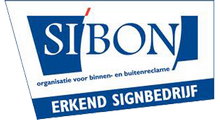Learning Agreement Thm
Possible article:
Understanding the Learning Agreement THM: A Guide for Students and Educators
If you are planning to study at Technische Hochschule Mittelhessen (THM), a university of applied sciences in Germany, you may encounter the concept of the “Learning Agreement” (LA). The LA is a document that outlines the educational program and the expected learning outcomes of a student`s stay abroad, either as a visiting student or as a degree-seeking student. The LA is a crucial part of the Erasmus+ program, which aims to promote international cooperation and mobility in higher education.
In this article, we will explain what the Learning Agreement THM is, why it matters, and how to complete it effectively. We will also highlight some tips and resources that can help you make the most of your study abroad experience at THM.
What is the Learning Agreement THM?
The Learning Agreement THM is a formal agreement between the student, the home institution (where the student is enrolled), and the host institution (THM), specifying the academic activities and credits that the student will undertake during the mobility period. The LA serves several purposes, such as:
– Ensuring that the student`s academic program abroad is fully recognized and accredited by the home institution, based on the ECTS (European Credit Transfer and Accumulation System) or another compatible credit system.
– Clarifying the learning objectives and outcomes of the student`s mobility, in terms of knowledge, skills, and competencies that are relevant for their studies and career goals.
– Facilitating the supervision and monitoring of the student`s progress by both the home institution and the host institution, through regular communication and feedback.
– Enhancing the transparency and comparability of the academic programs across different countries and cultures, by using a common language and framework for describing educational qualifications and achievements.
The Learning Agreement THM has three parts: the Before the Mobility (BTM) section, the During the Mobility (DTM) section, and the After the Mobility (ATM) section. Each section contains specific information and commitments that the student, the home institution, and the host institution agree upon.
The BTM section covers the preparatory phase of the mobility, such as the selection of courses, the language requirements, the academic calendar, and the funding arrangements. The DTM section covers the actual period of the mobility, including the courses and exams that the student will attend and the credits that will be awarded. The ATM section covers the follow-up phase of the mobility, such as the recognition and transfer of credits back to the home institution, the feedback and evaluation of the mobility experience, and the dissemination of the results.
Why does the Learning Agreement THM matter?
The Learning Agreement THM matters for several reasons, such as:
– It ensures that the student`s academic achievements and qualifications are recognized and valued by both the home institution and the host institution, and that they contribute to the student`s degree program.
– It helps the student to plan and organize their mobility period more efficiently, by providing a clear and realistic roadmap of what they can expect and what they need to do.
– It facilitates the communication and collaboration between the student, the home institution, and the host institution, by establishing a common understanding and framework for their responsibilities and expectations.
– It promotes the development of intercultural and interdisciplinary competencies and perspectives, by exposing the student to different academic and social environments and by fostering critical reflection and dialogue.
How to complete the Learning Agreement THM effectively?
Completing the Learning Agreement THM effectively requires some preparation, communication, and flexibility. Here are some tips and resources that can help you:
– Start early: Plan your mobility period well ahead of time, taking into account the application deadlines, the course offerings, the language requirements, and the financial support available. Consult the THM International Office and your home institution`s International Office for guidance and support.
– Choose wisely: Select the courses that match your academic interests, goals, and competencies, as well as the language of instruction that you feel comfortable with. Check the course descriptions and the syllabi carefully, and compare them with the equivalent courses at your home institution. Ask for advice from your academic advisor or tutor, and from the THM lecturers or tutors who teach the courses you are interested in.
– Communicate clearly: Keep in touch with your home institution and the THM International Office throughout the mobility period, informing them of your progress, any changes or issues that may arise, and any questions or concerns that you have. Use the online tools and platforms provided by THM, such as ILIAS, to access course materials, communicate with other students, and submit assignments.
– Be flexible: Be open to unexpected challenges and opportunities that may arise during your mobility period, such as cultural differences, academic expectations, or personal growth. Keep a journal or a blog to reflect on your experiences and share them with others. Participate in extracurricular activities and events that are organized by THM or by local student associations, to broaden your social and cultural horizons.
In conclusion, the Learning Agreement THM is an important document that can enhance your study abroad experience at THM. By understanding its purpose and requirements, and by following some best practices, you can make the most of your mobility period and gain valuable skills and knowledge that will benefit you in your future academic and professional endeavors. Good luck!

